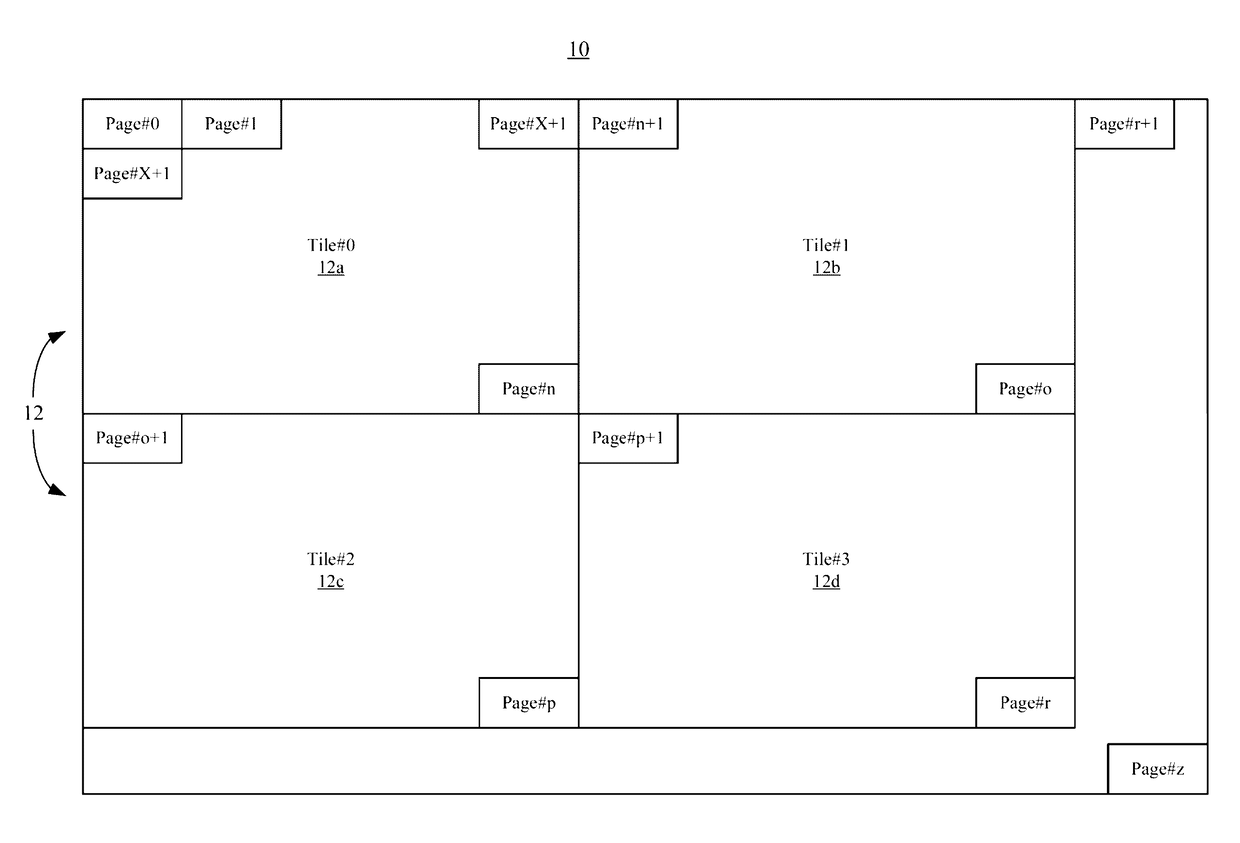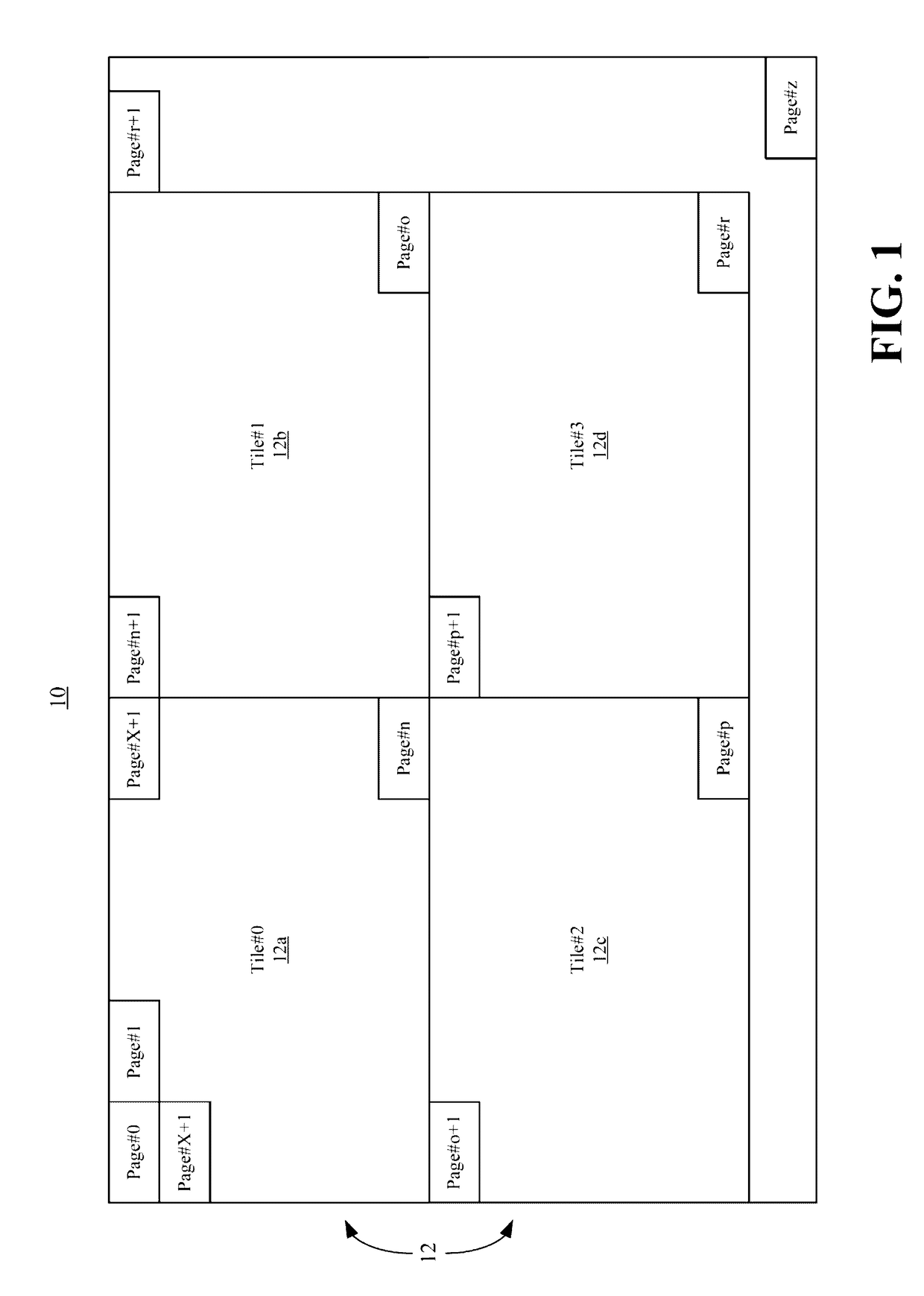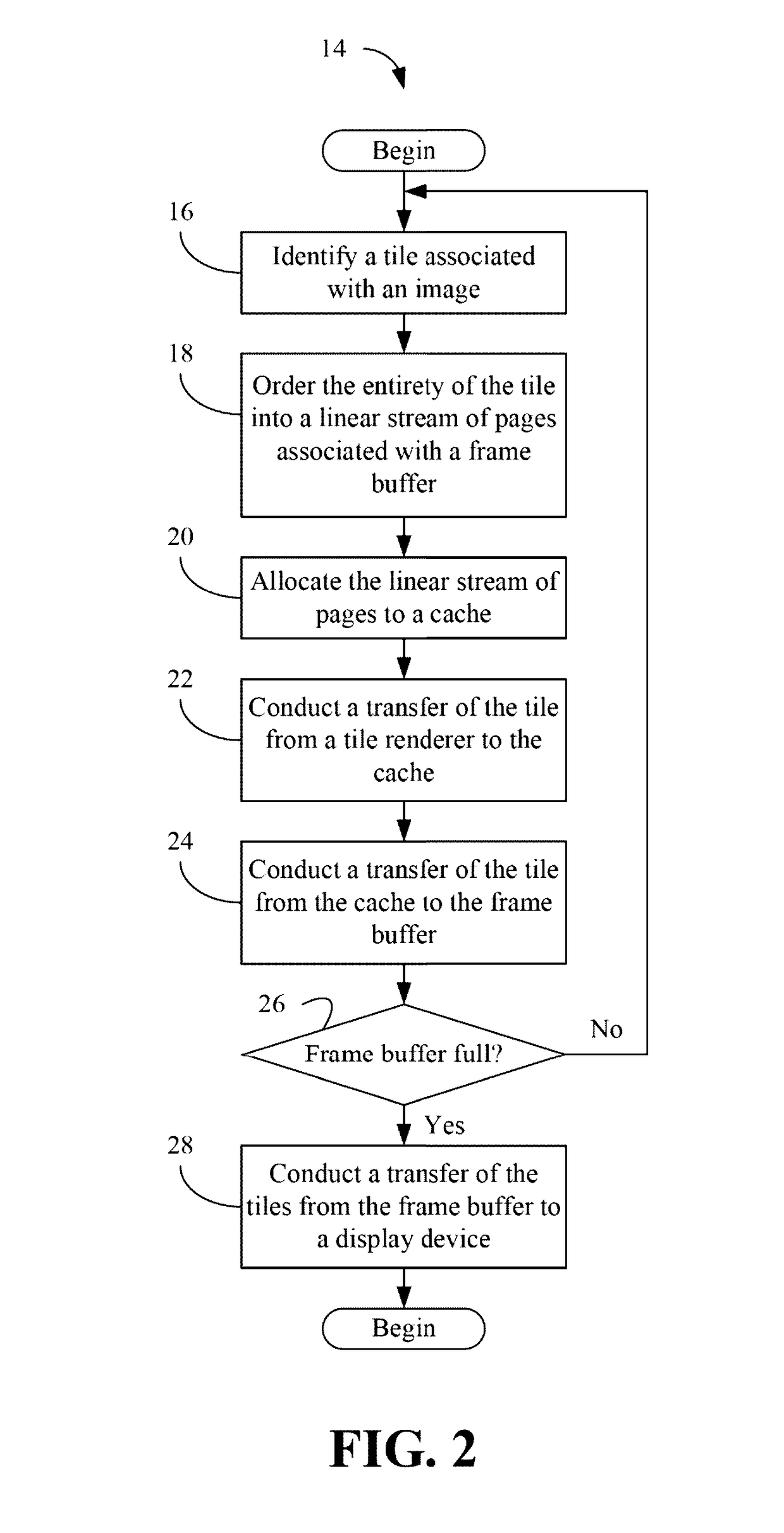Page management approach to fully utilize hardware caches for tiled rendering
a page management and tile technology, applied in image memory management, instruments, computing, etc., can solve the problems of tile data that may not be fully utilized, insufficient utilization of caches, and may not be able to meet the needs of other types of non-tiled data,
- Summary
- Abstract
- Description
- Claims
- Application Information
AI Technical Summary
Benefits of technology
Problems solved by technology
Method used
Image
Examples
example 1
[0047 may include a system comprising a battery to supply power to the system, a frame buffer, a cache, a host processor and at least one computer readable storage medium including a set of instructions. If executed by the host processor, the instructions may cause the system to identify a tile associated with an image, order an entirety of the tile into a linear stream of pages associated with the frame buffer and allocate the linear stream of pages to the cache.
example 2
[0048 may include the system of Example 1, wherein the linear stream of pages is to be allocated to the cache in accordance with a fixed set selection policy of the to cache.
example 3
[0049 may include the system of Example 1, further including a tile renderer, wherein the instructions, if executed, cause the system to conduct a first transfer of the tile from the tile renderer to the cache, and conduct a second transfer of the tile from the cache to the frame buffer.
PUM
 Login to View More
Login to View More Abstract
Description
Claims
Application Information
 Login to View More
Login to View More - R&D
- Intellectual Property
- Life Sciences
- Materials
- Tech Scout
- Unparalleled Data Quality
- Higher Quality Content
- 60% Fewer Hallucinations
Browse by: Latest US Patents, China's latest patents, Technical Efficacy Thesaurus, Application Domain, Technology Topic, Popular Technical Reports.
© 2025 PatSnap. All rights reserved.Legal|Privacy policy|Modern Slavery Act Transparency Statement|Sitemap|About US| Contact US: help@patsnap.com



